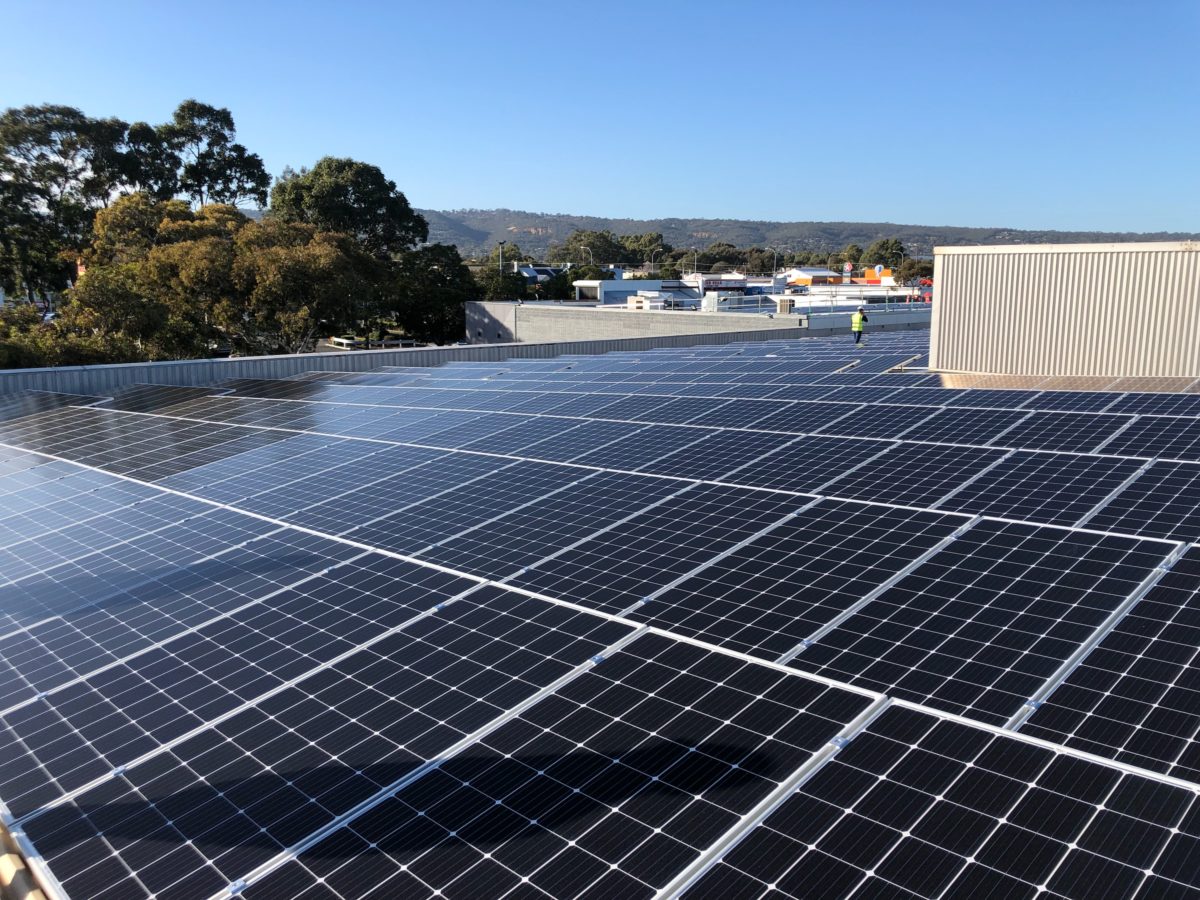In a first for a South Australian council, the City of Adelaide’s operations will be powered by 100% renewable electricity as part of a power purchase agreement inked with electricity retailer Flow Power effective as of July 1. The long-term commitment to purchase a solar-wind electricity blend will both help South Australia’s energy transition and bring the City a step closer to its goal of becoming one of the world’s first carbon-neutral cities.
The deal will see all corporate and community buildings, council event infrastructure, electric vehicle chargers, barbecues in the Park Lands, water pumps, street lighting, and traffic lights – everything that the Council operates -powered by renewable electricity. The electricity will be delivered from the 57 MW Clements Gap wind farm in mid-north South Australia and new solar farms on the Eyre Peninsula and in the South East.
The Streaky Bay and Coonalpyn Solar Farms, which Flow Power has acquired from Tetris Energy, will help generate local employment opportunities in both construction and operational stages.“This deal will provide crucial support to new solar projects in the state, creating jobs and helping to bring more renewables into the system,” Flow Power Co-Founder and Director of Engineering and Projects, David Evans, said.
The electricity to be provided by renewable generation each year is equivalent to powering over 3,800 homes, reducing emissions by over 11,000 tonnes or the equivalent of taking 3,500 cars off the road. Electricity cost savings are anticipated to be in the order of 20% compared to the City of Adelaide’s most recent contract.
Lord Mayor of Adelaide, Sandy Verschoor, said that procuring 100% renewable electricity was part of the City of Adelaide’s commitment to becoming a carbon-neutral council and would reduce its emissions by approximately 50%. “This partnership will not only save our rate payers money; it helps cement Adelaide’s international clean and green reputation,” she said.
But switching to renewable electricity is only one of many climate-related initiatives the City of Adelaide has taken. In 2019, new solar panels were installed in four additional locations, increasing the City of Adelaide’s total solar power capacity to over 1.1 MW. Buildings such as the Adelaide Town Hall, works depots, car parks, Adelaide Central Market and Adelaide Aquatic Centre are being powered by on-site solar power, saving the City of Adelaide 12% in building electricity use and over a quarter of a million dollars per annum.
In addition, the City is offering support and incentives for its ratepayers and property owners to become more sustainable through a great number of incentives, including those for solar, bidirectional EV charging infrastructure, energy storage, and controlled load.
Melbourne was the first Australian capital to become powered by 100% renewable energy. Its achievement came after 14 members of the city’s leading universities, cultural institutions, corporations, and councils combined their purchasing power to support the construction of the 80 MW wind farm at Crowlands, near Ararat, with a long-term PPA inked with Pacific Hydro for 88 GWh of electricity per year. As energy from the wind farm began flowing into the grid early last year, the City of Melbourne announced it had made the switch to 100% renewables.
In October, the City of Sydney unveiled the biggest standalone renewables deal for an Australian council. Valued at over $60 million, the plan will see the City meet its electricity needs using only wind and solar as of July this year. Under an offtake deal inked with Flow Power, the City has committed to buying electricity from the 270 MW Sapphire Wind Farm in northern NSW, the 120 MW Bomen Solar Farm near Wagga Wagga in the south-west of the state, and not-for profit community-owned solar scheme near Nowra on the south-east NSW coast.
Other local governments have also committed to transitioning to 100% renewables, including the former coal hub of Newcastle in New South Wales.
This content is protected by copyright and may not be reused. If you want to cooperate with us and would like to reuse some of our content, please contact: editors@pv-magazine.com.









I do not understand how, at this point in our transition to renewable energy, a city can say it is using 100% renewable power. Water pumps still need to run at night; are batteries being installed next to every one? If these councils are simply paying for enough renewable energy then relying on coal generated power at night, then what they are claiming is misleading and is one of the reasons why our progress is being hindered and the public discourse around the topic is so incoherent.